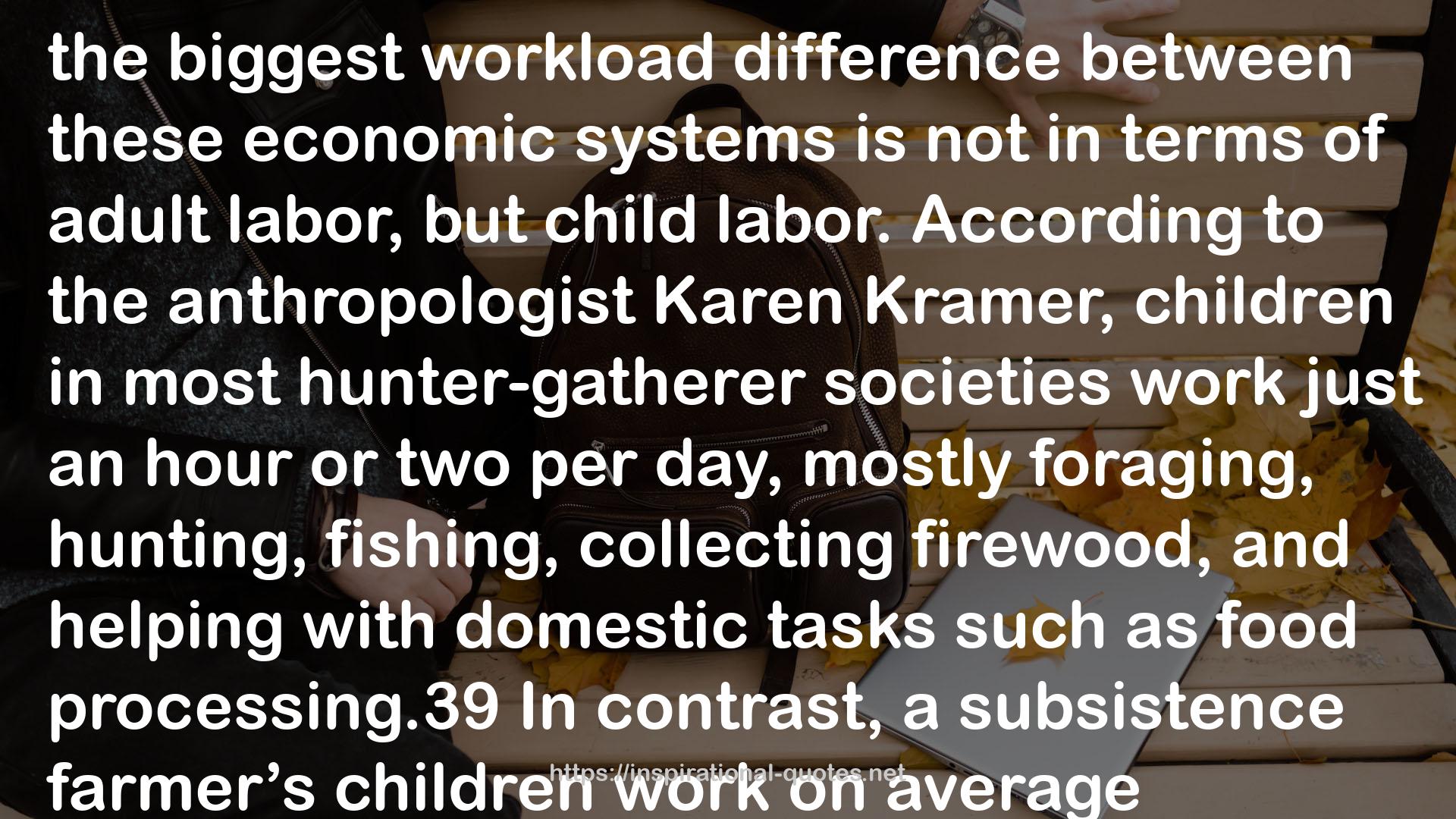" the biggest workload difference between these economic systems is not in terms of adult labor, but child labor. According to the anthropologist Karen Kramer, children in most hunter-gatherer societies work just an hour or two per day, mostly foraging, hunting, fishing, collecting firewood, and helping with domestic tasks such as food processing.39 In contrast, a subsistence farmer’s children work on average between four to six hours a day (the range is from two to nine hours) doing gardening, tending animals, hauling water, collecting firewood, processing food, and doing other domestic tasks. In other words, child labor has an ancient agricultural history because children are needed for their substantial contributions to a family’s economic success, especially on a farm. Child labor also helps teach youngsters the skills they will need as adults. Today "
― Daniel E. Lieberman , The Story of the Human Body: Evolution, Health, and Disease
